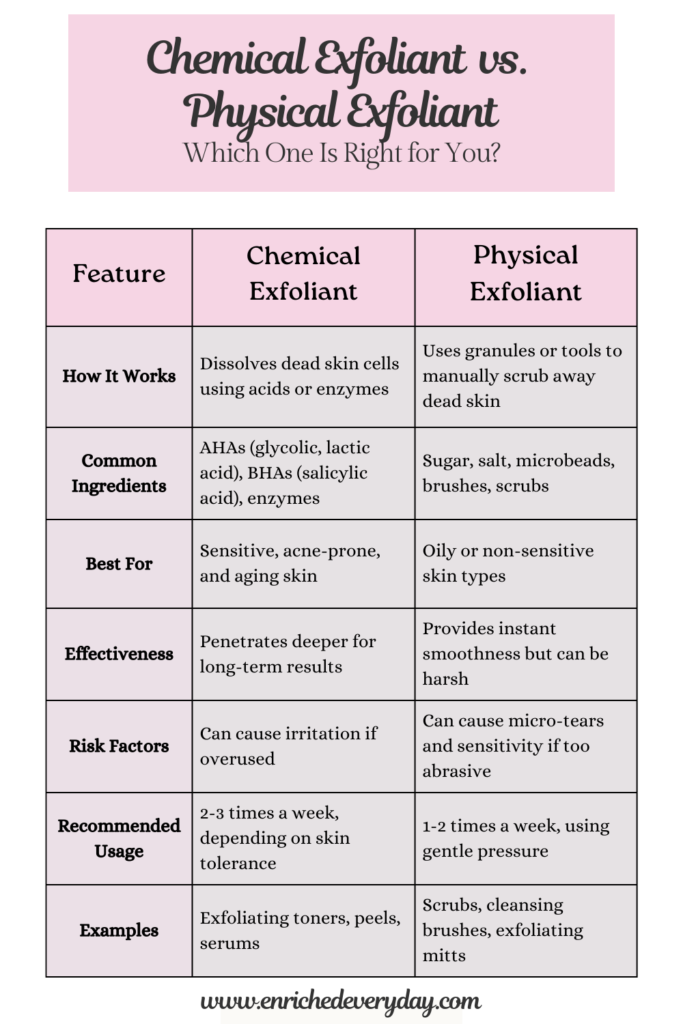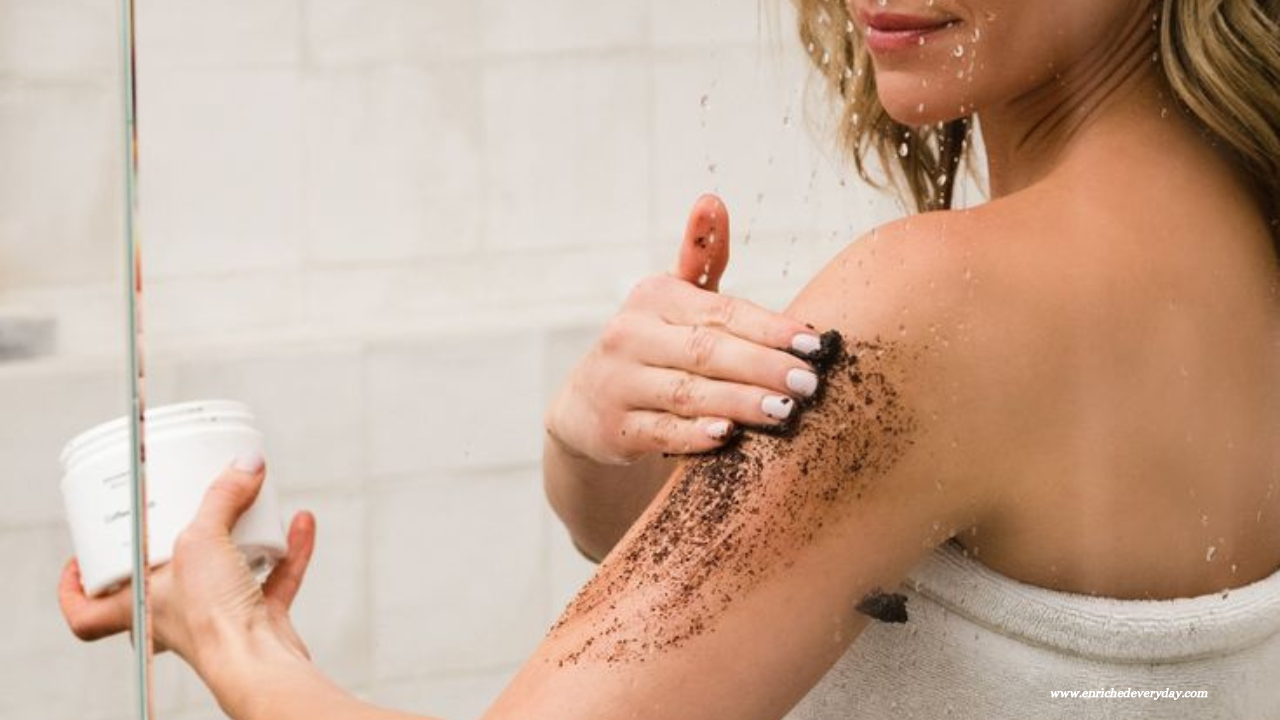One of the most talked-about skin care procedures is exfoliation but many people are unsure of how to do it correctly. It promises smooth radiant skin but if done incorrectly it can also cause irritation and breakouts. So are you genuinely benefiting your skin or are you possibly harming it without recognizing it? Let’s explore the world of exfoliation, dispel common misconceptions and determine whether your regimen is helping or hurting you.
In this Article,
Why Skincare Experts Swear by Exfoliation
The explanation for dermatologists and skin care specialists’ emphasis on exfoliation is straightforward: it’s the key to lighter healthier skin. Dead skin cells accumulate on the skin’s surface as we age because our natural cell turnover slows down. This can clog your pores, make our complexion appear lifeless and hinder the proper absorption of skincare products.

Frequent exfoliation expedites this process exposing more youthful skin beneath. When done properly, exfoliation reduces dark spots, helps prevent acne and even increases the production of collagen which eventually lessens wrinkles and fine lines. Correct is crucial in this case though as over exfoliation can strip the skin and do more harm than good.
How Exfoliation Actually Works—And Why Your Skin Loves It
Although your skin naturally sheds dead cells occasionally a little assistance is needed. Using chemical exfoliants or physical scrubbing exfoliation eliminates these extra cells. Scrubs cleansing brushes or instruments that manually remove dead skin cells are all part of physical exfoliation. These may work well but they may also be too harsh and leave the skin with tiny tears.
Conversely chemical exfoliation dissolves dead skin cells without scrubbing by using acids such as salicylic lactic or glycolic acid. These acids unclog pores and enhance the texture of the skin by acting at a deeper level. Because it makes your skin look smoother and more radiant and increases the efficacy of moisturizers and serums your skin loves exfoliation. Your skin may react with irritation redness and breakouts if you overdo it.
Can Exfoliating Make Your Acne Worse? Here’s the Truth
A common misperception regarding exfoliation is that it is always beneficial for skin that is prone to acne. Even though exfoliating can help unclog pores and lessen breakouts, doing so too frequently can deplete the skin’s natural oils which increases oil production and ironically acne.
Salicylic acid and other chemical exfoliants are ideal for people who suffer from breakouts because they dissolve dead skin cells and excess oil by penetrating deeply into the pores. However harsh scrubs can worsen acne by irritating active breakouts and spreading bacteria. It might be time to cut back and give your skin time to heal if you observe that your acne flares up after exfoliating.
Do You Really Need to Exfoliate? Here’s How to Tell
Some skin types are more sensitive than others and not everyone needs to exfoliate frequently. You might benefit from exfoliation if your skin has clogged pores, feels rough or appears lifeless. However excessive exfoliation may cause more harm than good if your skin is already dry sensitive or easily irritated.
For those with dry or sensitive skin gentle exfoliation once a week is sufficient but those with oily or combination skin may need to exfoliate more frequently to control excess oil. Listen to your skin if it starts to peel, get red or become irritated you’re doing too much.
The Best Type of Exfoliation for Your Skin—Are You Using the Right One?
Your skin type will determine the best exfoliation technique. Gentle chemical exfoliants such as lactic acid are effective for dry or sensitive skin because they remove dead skin cells while hydrating. salicylic acid which deeply penetrates pores to remove excess oil and stop breakouts is beneficial for oily and acne-prone skin types. Because glycolic acid helps to brighten and smooth skin it’s a great option for normal or combination skin.

Scrubs and other physical exfoliation methods can be used occasionally but in order to prevent microtears in the skin it’s crucial to select a formula with fine non-abrasive particles.
Where Does Exfoliation Fit in Your Routine? (Most People Get This Wrong!)
Exfoliation works best after cleansing but before using moisturizers and serums. This improves the penetration of active ingredients increasing the effectiveness of your skincare products. Exfoliating too frequently or at the incorrect time is a common mistake made by many people. Apply a scrub after cleansing but before toning if you’re using one.
Chemical exfoliants ought to be applied to dry clean skin prior to serum application. After exfoliating your skin applies sunscreen right away because the freshly-abraded skin becomes more prone to sunburns. Exfoliated skin needs moisturizer application to maintain hydration.
Are You Exfoliating at the Right Time? Here’s What Dermatologists Say
Dermal restoration happens naturally during sleep making exfoliation best performed during nighttime. Nighttime exfoliating creates a protective layer for skin which permits the absorption of nutrients while skin heals during rest period. After exfoliation you should protect newly revealed skin with sunscreen if you tend to perform exfoliation in the morning. Your skin’s protective layer may be weakened by excessive exfoliation leaving it more vulnerable to UV and pollution damage.
Exfoliation Myths and Facts—What You Need to Know
| Myth | Fact |
|---|---|
| Exfoliating every day gives you better skin. | Over-exfoliation can lead to irritation, sensitivity, and breakouts. Most skin types only need exfoliation 2-3 times a week. |
| Scrubs are the best way to exfoliate. | While physical exfoliation works for some, chemical exfoliation is often more effective and less harsh. |
| If your skin burns or tingles after exfoliation, it’s working. | A slight tingle is normal, but burning or stinging means you’re damaging your skin barrier. |
| Exfoliation is only for people with oily skin. | All skin types can benefit from exfoliation, but the method and frequency should be adjusted based on skin sensitivity. |
| Exfoliating removes tan and makes skin fairer. | Exfoliation can brighten the skin by removing dead cells, but it does not change your natural skin tone or remove a tan. |
DIY Exfoliation Recipes for a Gentle Glow
As an alternative to harsh chemicals DIY exfoliants can be a great way to achieve a healthy glow if you prefer natural skincare. These are some easy recipes.

Honey and Oatmeal Scrub (For Sensitive Skin)
2 tbsp oatmeal (ground)
1 tbsp honey
1 tbsp yogurt
Use circular motions to mix and apply. After five minutes, rinse.
Coffee and Coconut Oil Scrub (to exfoliate the body)
¼ cup ground coffee
2 tbsp coconut oil
To gently massage wet skin and then rinse.
Lemon and Sugar Scrub (For Oily Skin)
2 tbsp sugar
1 tbsp lemon juice
1 tbsp olive oil
To gently massage the skin, let sit for two minutes and then rinse.
The Bottom Line on Exfoliation
For smooth glowing skin exfoliation is a game-changer—but only when done properly. Your skin’s protective layer may be weakened by excessive exfoliation which can cause dryness irritation and breakouts. Choosing the appropriate exfoliation method for your skin type and striking the correct balance are crucial. Moderation is key regardless of your preference for chemical or physical exfoliants. Always follow up with hydration and SPF, pay attention to your skin and modify your regimen as necessary. Exfoliation when done correctly can be the key to healthy glowing skin.
Curious about another trending skincare routine? Read my blogpost on Does Skin Cycling Work? Trending Skincare Explained!.
